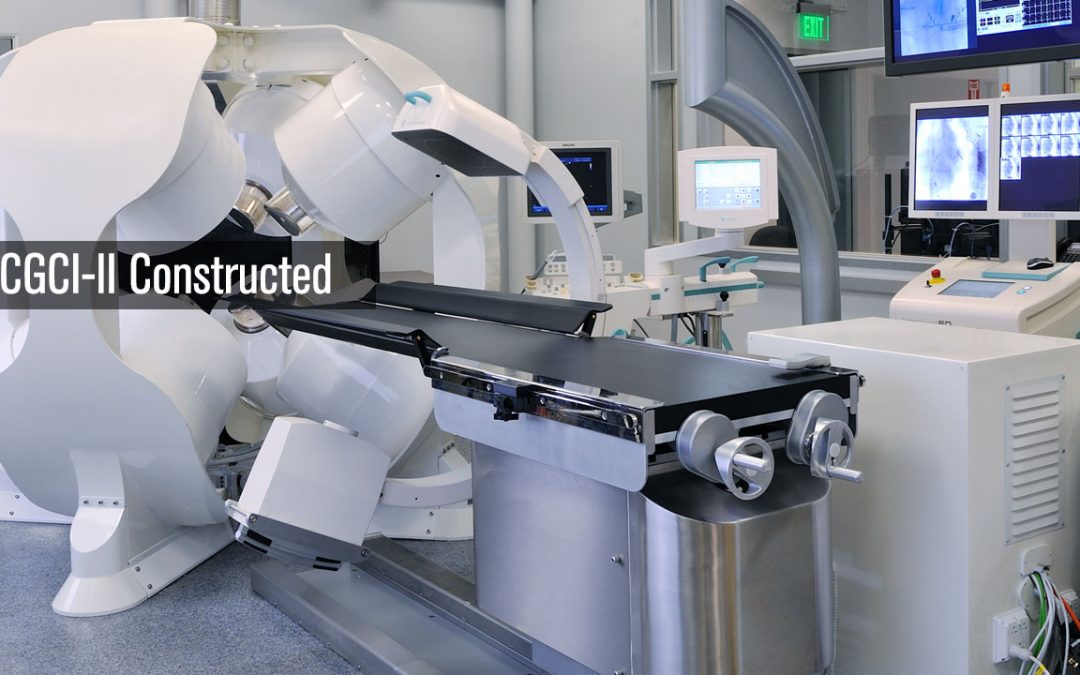The first full-scale prototype of the CGCI platform is completed. The unit utilizes eight magnetic lobes, each containing a twenty-four-inch coil capable of producing a magnetic field of 1900 Gauss. The unit stands seven feet tall and has a floor weight of 20,000lbs. In addition to the Magnetic Sphere structure, the unit was equipped with a carbon-fiber bed which is non-magnetic and highly transparent to fluoroscopy. Positioning is controlled by the pendant on the side of the bed. Outside of the CGCI, it is possible to adjust the height, tilt (head-to-toe), and lateral (side-to-side) position. An EnSite NavX™ provides the localization and mapping information to the CGCI system and an ELDI data interface (EnGuide Location Data Interface) provides the location of every catheter’s electrode. A CGCI Linear Advance mechanism adds or removes catheter slack to provide the force necessary to overcome the friction at the hemoseal and within the catheter sheath. An EP MedSystem ECG as well as view the Phillips ICE and Ziehm XRay simultaneously provide real-time imaging and biofeedback to the control suite.
The CGCI Symphony™ control suite unifies the display and control of the CGCI system and all the peripheral devices. By capturing video from these systems and virtualizing mouse and keyboard messages through specialized software on a centralized system, the physician has the advantage of viewing and controlling multiple systems from a single workstation. Correlation of real-time data is much more effective since the displays are presented and controllable through a single user interface. We call this the CGCI Unified Interface. Mouse and keyboard messages are sent out from the Unified Interface by tracking the mouse position relative to the current layout of the displays in the UI. When the mouse is over a given display, mouse and keyboard messages are sent to that system through a proprietary device. Video Feeds from each of the EP systems are connected to the console video capture system and simultaneously sampled at the refresh rate of each given display. The captured frames are written directly to the high-end GPUs for display during the render cycle of the Unified Interface. The initial version of the Unified Interface is a major feature of the CGCI software system. It allows the physician to directly control EnSite and the EP MedSystem ECG as well as view the Phillips ICE and Ziehm XRay simultaneously through a single user interface. The Symphony system also introduced the use of a Haptic 3D Controller that gives tactile feedback or a force response of the catheter movement, to the operator depending upon the CGCI control mode.

